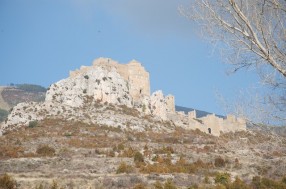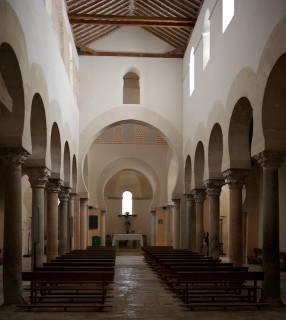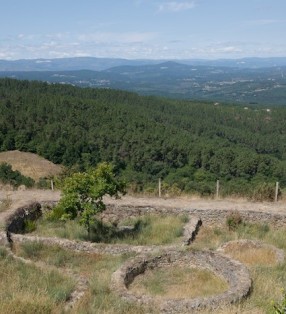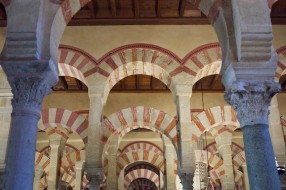Lectures, Courses & Tours

A Survey of Spanish Art and Architecture: Romanesque c.1065-c.1214
This course aims to introduce students to the visual culture of Spain from c.1065 to c.1214. It will trace traditions and developments across the peninsula with particular attention to the ways in which buildings and their ornament, together with the objects produced in and for them, reflect the diverse landscape of the peninsula and its peoples. Suitable for beginners as well as for those with previous knowledge of Spain or of the period, these ten classes will look at a period of major change for the art and architecture of Spain and Portugal. The wealth generated in tribute from the Arab kingdoms was spent on the development of fine Romanesque buildings and sculpture. At the end of the eleventh century the kingdoms of Northern Spain faced Gregorian Reform and adapted their art accordingly along the Pilgrimage Routes. The conquest of Toledo brought resistance from the Almoravids and Almohads of North Africa and a new ascetic architecture. By the end of the twelfth century the Cistercians were presiding over a revival of Beatus manuscripts and a rich late Romanesque, whilst the royal family wore the finest Andalusi silks in life and in death.

Spanish Art and Architecture II: from the Arab Conquest to c.1050
Jan-Mar 2010
This course aims to introduce students to the visual culture of Spain from the Arab Conquest in 711 to c.1050. It will trace traditions and developments across the peninsula with particular attention to the ways in which buildings and their ornament, together with the objects produced in and for them, reflect the diverse landscape of the peninsula and its peoples. Suitable for beginners as well as for those with previous knowledge of Spain or of the period, these ten classes will look at the art and architecture of Spain and Portugal as it emerged after 711. Despite their divergent religious practice and culture, the Christian kingdoms in the far north and the Islamic emirate in the south both reused Roman and Visigothic architectural and decorative elements in their buildings. The Christians also looked to their links with the Carolingian lands to the north, whereas the Muslims continued to draw primarily on their connections to the East, in both Constantinople and Damascus. In the tenth century, the emigration of monks from Cordoba to the north precipitated a rich mix of both artistic traditions in architecture and manuscripts, which became known, controversially, as ‘Mozarabic’.

Spanish Art and Architecture I: from the Celts and Romans to the Arab Conquest
Previously taught at Morley College, Sept-Dec 2009
This course aims to introduce students to the visual culture of Spain from Antiquity to the Arab Conquest in 711. It will trace traditions and developments across the peninsula with particular attention to the ways in which buildings and their ornament, together with the objects produced in and for them, reflect the diverse landscape of the peninsula and its peoples. Suitable for beginners as well as for those with previous knowledge of Spain or the period, these ten classes will look at the art of the Celts, the Iberians, the Romans, the Hispano-Romans and the Visigoths. The gold mines of the north-west produced remarkable jewellery; mosaics to rival those in North Africa adorned some of the richest Roman villas in Europe, and the Visigoths established a new identity out of the vestiges of the Roman Empire.

Betweens Kings and Caliphs: art, war and diplomacy on the frontiers, c.711-c.1250
Previously taught at Summer School, Courtauld Institute of Art, Aug 2009
Islamic art developed rapidly during the seventh and eighth centuries in tandem with the equally swift expansion of Islamic rule across North Africa, into the Iberian peninsula, and to the island of Sicily. This art used the Graeco-Roman tradition of the Byzantine Empire, but quickly transformed it into something distinctive and original. We can still appreciate this today in the Great Mosque at Damascus or the desert palace of Khirbat al-Mafjar. This course will focus on Spain, but will also refer to other frontier lands and diplomatic contacts. Fleeing Damascus, the Umayyad dynasty ruled in Córdoba in Spain, as Emirs or Caliphs, from the eighth to the early eleventh century. The Mosque of Córdoba is the most potent reminder of this time when the city was fabulously rich and sophisticated. By the ninth century Christian kingdoms in the north had begun to grow and establish new identities, which they expressed partly through art and architecture. From 1085 two successive Berber dynasties from the Maghrib seized power: the Almoravids and the Almohads. This change coincided with a hardening of attitudes on both sides. These dynasties were zealous in the Muslim faith, while the First Crusade was preached in Christian lands to the north. By the middle of the thirteenth century only the Kingdom of Granada remained under the rule of the Arabic Nasrids. We shall look at the ways that art operated across the notional and real boundaries between these realms. Buildings that had been churches became mosques; later mosques were again used as churches. Exquisite ivory caskets with scenes of life at a Caliph’s court were reused to house the relics of Christian saints; their bones wrapped in the finest Islamic silks. The Islamic rulers prized the technical skill of Byzantine artists, whilst Christian kings were keen to enjoy the luxury goods of their Islamic neighbours. Questions of stylistic ‘influence’ and ‘appropriation’ have given rise to fierce debates. We shall discuss the controversial but much used words ‘Mozarabic’ (literally ‘arabized’) and Mudéjar (‘domesticated’). These terms have been used to describe the peoples who lived or had lived in a territory ruled by the other faith. By extension they are used for the art supposedly produced by those people in Christian or Muslim lands. We shall investigate why these labels might be misleading and to what extent artists may have moved between the different territories. What does working in a particular style really tell us about an artist’s ethnic or religious origin? Visits on this course will include the V&A, and The British Library.